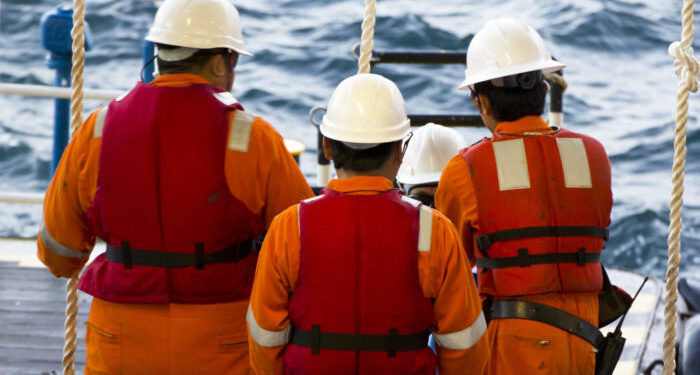Skuld Club published a case study of an incident reported to them to highlight the importance of being in line with the safety culture in order to prevent musculoskeletal injuries during operations onboard the vessel.
The Incident
Two crewmembers were instructed by an officer to transfer a main engine spare, weighing about 250 kg, from the engine room to the wet deck above. The crew decided to pull and lift the engine part as there was a swell making unable the roll of the engine spare.
The component had to be transferred from its initial position along the deck through a door way with a lip of approximately 15 to 20 centimetres into the shaft tunnel and then along the shaft tunnel to a hatch where the part could be hoisted to the above deck.
Both crew first pulled the part along the deck and then with help from two more crewmembers they lifted it through the door frame over the lip of the door. At that moment, one of the crewmembers felt a ‘snap’ in his back however continued to manoeuvre the part to the location below the hatch and up to the next deck and completed the task.
This resulted to the crewmembers being unable to work for the rest of the passage.
Following the incident, Skuld comments that there was no risk assessment or toolbox talk prior to starting the move performed by those who were supposed to be supervising the task.
Given that the engine part was really heavy, it should never have been moved via annual handling alone.
It is a vital element of any task undertaken on board that a full risk assessment is performed to ensure that risk is managed and to ensure it is as low as reasonably practicable throughout the operation.
When it comes to manual handling, the Club alerts that it can be helpful to follow a systematic assessment methodology such as the TILE method.
Actions Taken
The following actions should be implemented to prevent further incidents:
Review procedures to ensure the efficacy of risk assessments and toolbox talks. Risks and control measures must be identified, put in place, discussed and understood by all, particularly by those supervising the operations.
Specifically, for manual handling tasks ensure that there is a systematic methodology and procedure for risk assessment.




























































